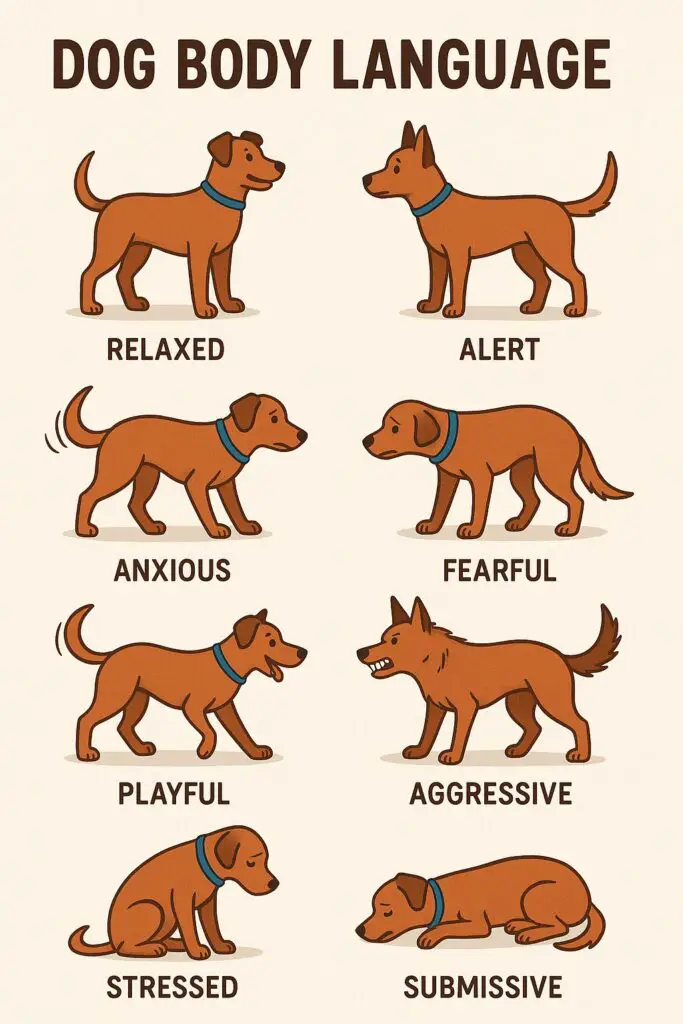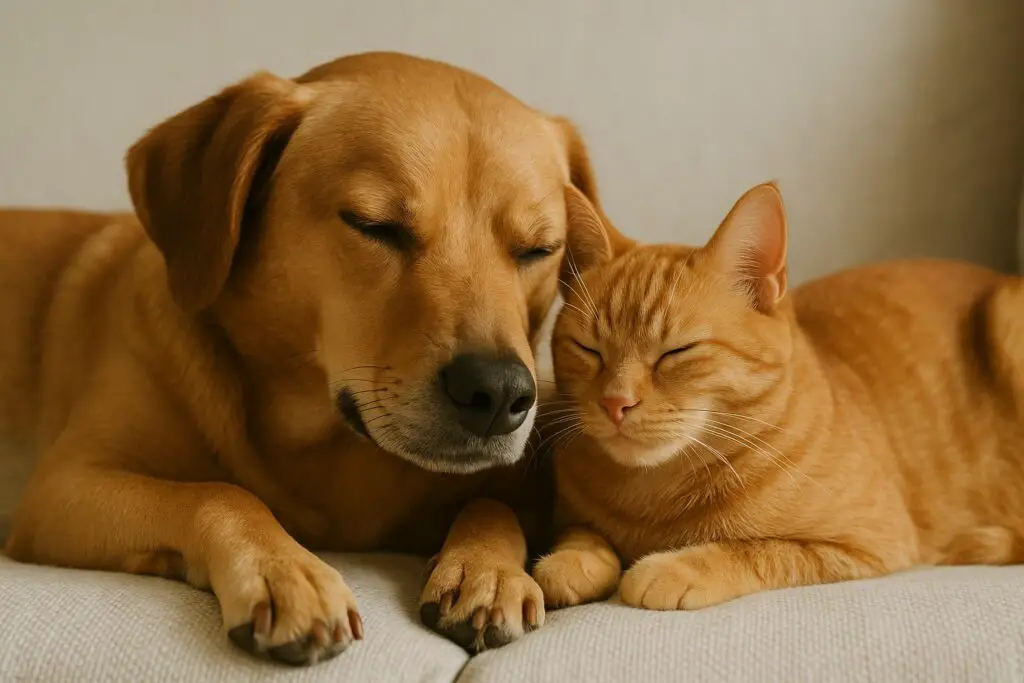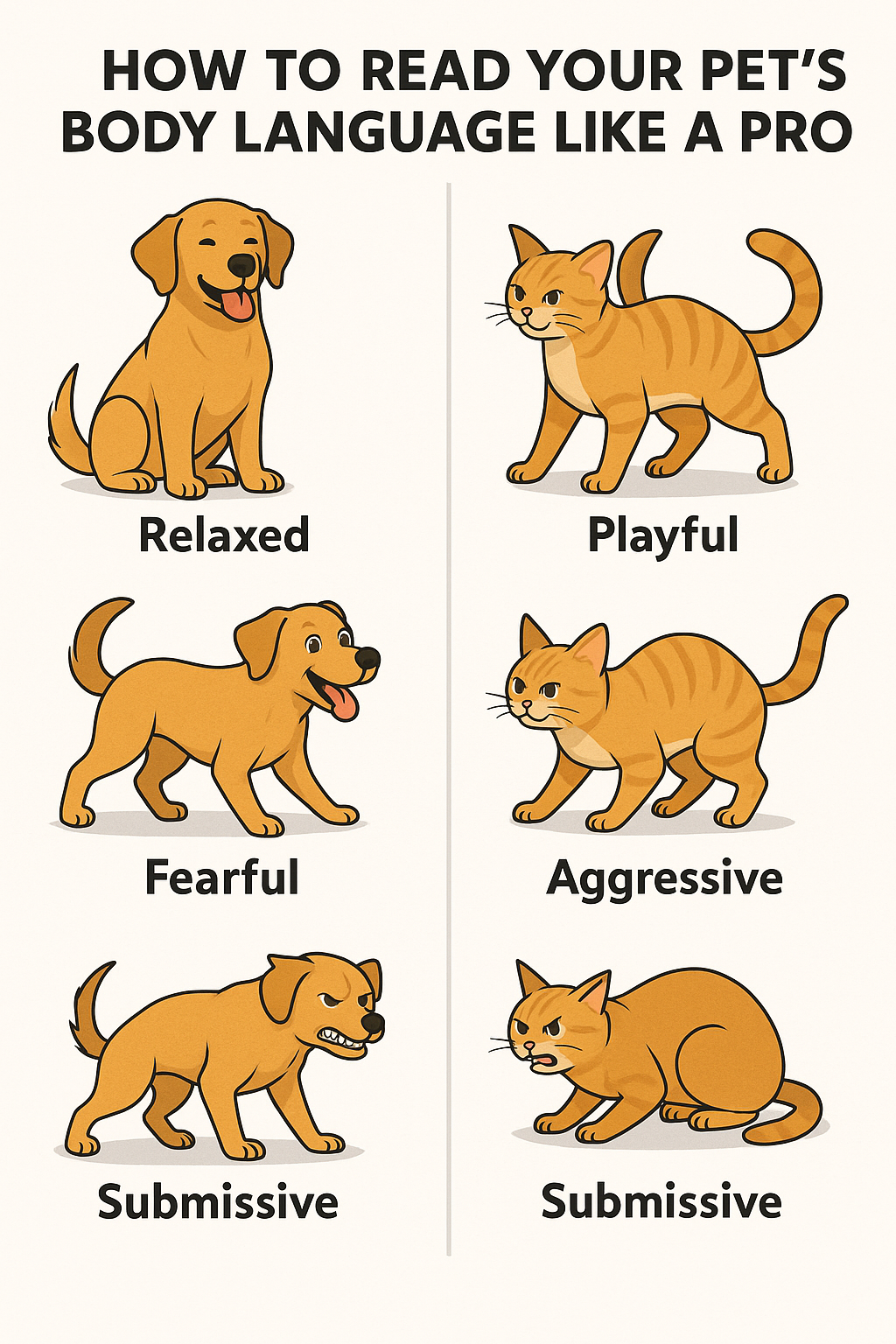Pets don’t speak our language—but that doesn’t mean they aren’t communicating. In fact, body language is your pet’s first language. Whether it’s a dog wagging its tail or a cat flicking its ears, your pet is constantly sending signals about how they feel.
Understanding these non-verbal cues can make you a more attentive, responsive, and loving pet parent. This guide dives deep into how to read your pet’s body language like a pro, helping you build trust, spot stress, and deepen your connection.
🐶 Decoding Dog Body Language
Dogs are expressive animals. From ears to tail, every part of their body plays a role in communication.

1. Tail Positions and Movements
- High and wagging quickly – Excited and confident.
- Slow wagging – Uncertain or assessing a situation.
- Tucked tail – Fear, submission, or anxiety.
- Stiff and raised – Alert or defensive.
Tip: A wagging tail doesn’t always mean a happy dog. Look at other body signals for context.
2. Ear Positions
- Erect and facing forward – Alert and focused.
- Flattened back – Fear, discomfort, or aggression.
- Neutral and relaxed – Calm and content.
3. Eyes and Facial Expressions
- Soft, blinking eyes – Relaxed and friendly.
- Wide-open eyes with whites showing (whale eye) – Anxiety or unease.
- Staring directly – Can signal challenge or dominance.
- Panting with a relaxed mouth – Content.
- Yawning or lip licking (outside of eating) – Stress or uncertainty.
4. Body Posture and Movement
- Play bow (front down, rear up) – Playfulness and excitement.
- Rigid body and forward posture – Alert or aggressive.
- Cowering or low body posture – Fear or submission.
- Turning away or showing belly – Submissiveness or trust, depending on context.
🐱 Understanding Cat Body Language
Cats are more subtle than dogs, but their body language is just as rich and revealing.

1. Tail Talk
- Straight up with tip curled – Friendly and confident.
- Puffed-up tail – Scared or aggressive.
- Flicking tail rapidly – Irritation or overstimulation.
- Tail wrapped around you or another cat – Affection or comfort.
2. Ears and Head
- Forward-facing ears – Interested or relaxed.
- Flattened sideways (“airplane ears”) – Scared or irritated.
- Backward or pinned ears – Angry or defensive.
- Head butting or rubbing – Scent marking and affection.
3. Eye Signals
- Slow blinking – Trust and love.
- Dilated pupils – Excitement, fear, or dim lighting.
- Staring without blinking – Aggression or hunting mode.
Pro tip: Return a slow blink to your cat to show affection.
4. Posture and Movement
- Arched back with raised fur – Defensive aggression.
- Lying on back, belly exposed – Trust, or a defensive trap.
- Hiding or turning away – Anxiety or desire for alone time.
- Kneading with paws – Contentment (often a kitten behavior carried into adulthood).

🧠 Context Is Everything: Don’t Read Signals in Isolation
Always consider the entire body and environmental context when interpreting pet body language. A wagging tail may be paired with a tense face. A cat lying on its back may not want belly rubs.
Ask yourself:
- Is this typical behavior for my pet?
- Are there loud noises, strangers, or unfamiliar smells nearby?
- Has there been a recent change in the household?
🧭 Why Body Language Matters for Pet Parents
Understanding body language isn’t just useful—it’s essential for:
- Preventing aggression: Early stress signs help prevent biting or scratching.
- Recognizing pain or illness: Pets hide discomfort well, but subtle cues like limping or licking specific areas are red flags.
- Improving training: Responsive training is easier when you know what your pet is feeling.
- Deepening trust: When pets feel “heard,” they respond with trust and affection.
🚫 Common Misconceptions About Pet Body Language
❌ Misconception 1: All tail wagging = happy
As covered earlier, dogs may wag when agitated, and cats might flick their tails in irritation.
❌ Misconception 2: If they’re not growling or hissing, they’re fine
Not true—many pets internalize stress. Look for subtle signs like pacing, lip licking, or excessive grooming.
❌ Misconception 3: Rolling over means “rub my belly!”
In cats especially, this can be a defensive position, not an invitation.
👩⚕️ When to Seek Help
Sometimes, body language is a signal that something deeper is wrong:
- Sudden behavioral changes
- Excessive hiding or aggression
- Obsessive behaviors like tail chasing or licking
- Loss of appetite or over-grooming
If you notice these, consult your veterinarian or a certified animal behaviorist.
📝 Final Tips for Reading Body Language Like a Pro
- Watch quietly: Observe without interacting to see natural behavior.
- Stay calm: Your energy affects your pet’s signals.
- Build patterns: Keep a log of recurring behaviors and triggers.
- Respect space: Don’t push interactions when your pet shows signs of discomfort.




